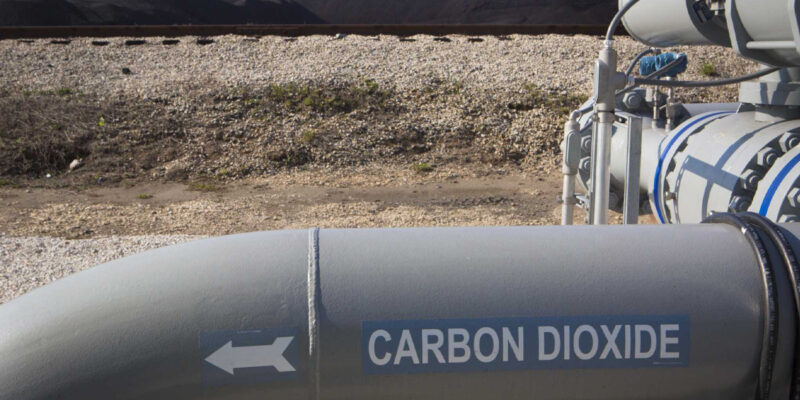The on-going and for some, eye-rolling debate over capturing and then doing something with carbon in Louisiana has been littered from the very beginning with imprecise language. Let’s be honest: the whole ‘carbon capture’ debate in Louisiana feels like a game of word tricks. The terms get twisted, the explanations don’t add up, and regular folks are left scratching their heads. So if someone asked you, “What do you think about carbon capture?” — how would you respond?
In the past few weeks, prominent business and political leaders have promised it’s a jackpot for Louisiana, something we “can’t afford to miss.” But pay attention — all their promises ride on two carefully chosen words: carbon capture. They tell us the opportunity is too good to miss. Today, I am offering up some clarification around the language in this debate.
As I have said REPEATELY, it’s NOT ABOUT THE CAPTURE. It’s about what happens after you capture it. There’s not just ONE THING, either. There are a number of things that can be done when you capture carbon dioxide (CO2).
I’m sure the talking point crowd won’t read this and if they do, they’ll roll their eyes at me again. Got it. But for those who are seriously in this debate, PLEASE try and be precise in what you say. If you are intentionally being cryptic or misleading, shame on you. If you want to have a reasonable debate, please speak precisely and accurately.
Let’s break this down. We’re talking about Carbon Capture, Utilization, Storage and Sequestration. There’s a new element to address in this subject, but I’ll get to it later. For those who have the time and for those who want to have a serious discussion, please….try. Here’s a breakdown as I understand it.
Carbon capture refers to the technological process of trapping carbon dioxide (CO2) emissions directly at the point of generation, such as from industrial facilities, power plants, or even ambient air through direct air capture methods.
The captured CO2 is then processed, compressed, and prepared for transportation via pipelines or ships to sites for utilization, storage or sequestration. Initially thought of as an action to help reduce global greenhouse gas emissions and part of a transition to low-carbon energy systems, carbon is being captured today more for economic and less for environmental reasons.
Carbon Utilization involves converting captured CO2 into useful products or integrating it into industrial processes, turning a potential pollutant into an economic resource.
Common applications include enhanced oil recovery (EOR), where CO2 is injected into oil fields to boost extraction, or manufacturing materials like concrete, plastics, and fuels through chemical reactions. No one opposes this to my knowledge, especially me. This approach not only mitigates emissions but also creates new revenue streams and supports circular economy principles by recycling carbon.
Advancements in utilization technologies aim to scale up processes to make them commercially viable for a number of uses. And let’s not forget CO2 is used in foods, but that’s another story.
Carbon Storage entails the long-term containment of captured CO2 in underground geological formations to isolate it from the atmosphere. Suitable storage sites include depleted oil and gas reservoirs, deep saline aquifers, or basalt formations, where CO2 is injected under high pressure and trapped by natural seals like impermeable rock layers. Monitoring technologies, such as seismic imaging and well integrity checks are in place to prevent leakage, maintaining environmental safety. For those who believe in such things. this method is important for achieving net-zero emissions targets. Truth be known, this is what we were told in the legislature—-that the carbon we catch in Louisiana would go into former oil locations. But that explanation could also be the subject of an entirely different essay.
Carbon Sequestration is the engineered process of removing CO2 from the atmosphere and storing it in sinks like oceans, soils, forests, or underground reservoirs for extended periods (permanently). Unlike temporary storage, sequestration emphasizes permanent placement below the earth’s surface; this was originally and ostensibly envisioned to offset emissions and stabilize the climate, but today it is done strictly now for economic incentive. Sequestration is permanent burial.
But just recently, I learned of another alternative to managing carbon emissions: Abatement.
Carbon abatement refers to strategies and actions taken to reduce or prevent carbon dioxide emissions from release, particularly in industries like wood processing, through measures like process optimization, energy efficiency, and sustainable practices. In wood processing, abatement involves things like converting furnaces and boilers to electric heaters that can significantly cut CO2 emissions. Despite high initial costs this reduces or eliminates some fossil fuel combustion. Replacing what is known as gray hydrogen with green hydrogen produced from biomass gasification, especially when paired with carbon capture, achieves low net carbon emissions by leveraging renewable feedstocks. Reforestation, afforestation, and sustainable forest management practices enhance these activities by increasing forest cover and optimizing long-term carbon storage in trees and soils. Additionally, applying biochar as a soil additive locks carbon in stable forms, further contributing to emission reductions and supporting sustainable land use in the wood processing industry.
Also recycling wood waste into bioenergy or composites extends carbon storage and displaces fossil fuels, which should meet the goals of whoever wants carbon emissions reduced. Overall abatement can be achieved by treating wood as a renewable, carbon-storing asset rather than a mere commodity. And, as aside, I’ve found that carbon abatement is done in both Texas and Arkansas, with some success apparently.
So, that’s the story. For those who want to be in this debate, please try. There are multiple things at play here. The English language can be precise, if we use it well. For anyone in this debate who wants to help Louisiana be better, why can’t we all agree to stop the confusing language and sleight-of-hand descriptions. Let’s work together to both try and understand AND move Louisiana forward. If you’re paying attention to this debate, you know the proponent of sequestration hardly EVER use the language precisely. I was verbally back handed last week in an online editorial where a lobbyist lectured me about how important storage is. I rarely SPEAK of storage. Storage I get and storage I support. My concerns are with sequestration in places where it’s not wanted or where the consequences have not been studied thoroughly enough.
And I’ll gladly have the discussion on all of these things with anyone who wants to use the English language and the definitions in this debate in a reasonably correct fashion. And, even if they don’t want to use the language correctly, rest assured I will.
Charles Owen is a second term-legislator who represents Vernon and Beauregard Parishes. He’s a member of the Rural Caucus, the Freedom Caucus, the Republican Delegation and the Central Louisiana Delegation. He is a retired military officer and serves as an adjunct faculty for four universities. He’s the son of an English teacher, too.
Advertisement
Advertisement

